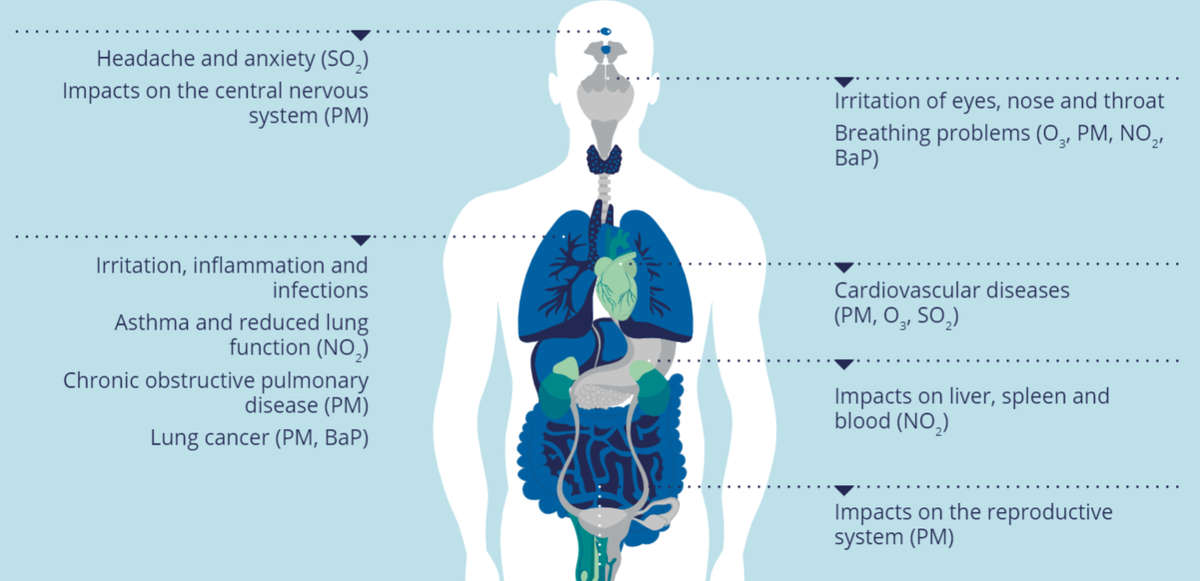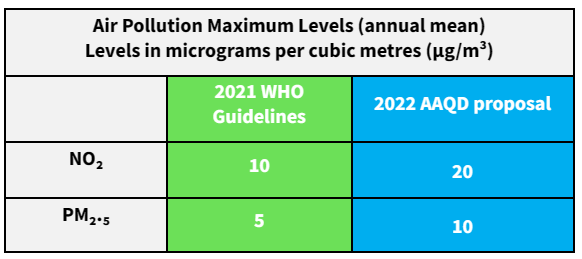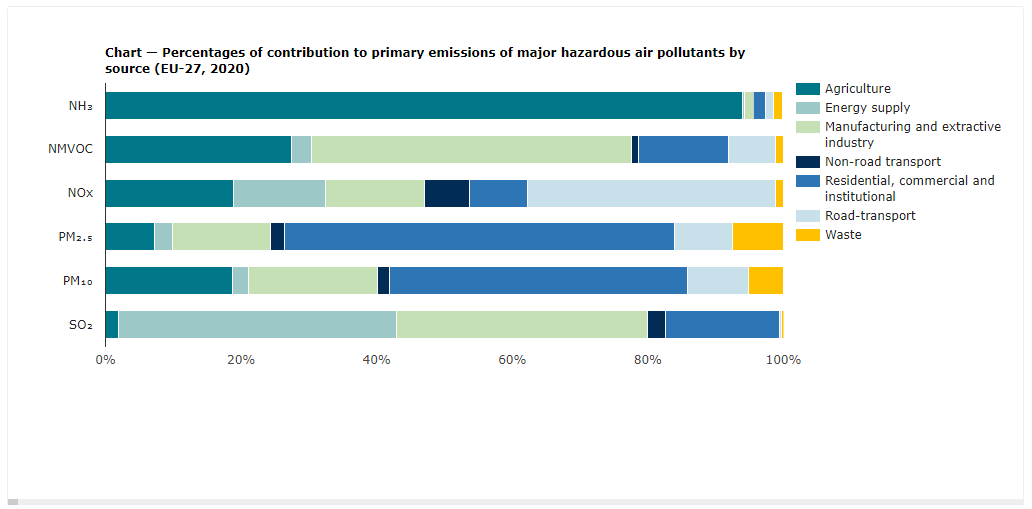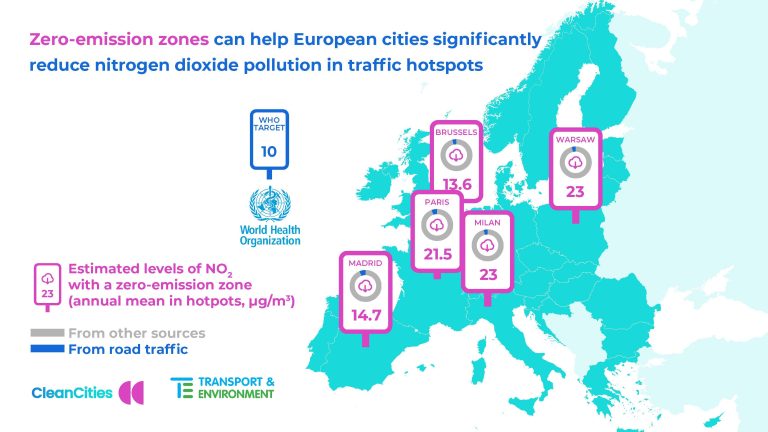Air pollution poses the greatest threat to human health in terms of environmental hazards. It is a silent and often invisible killer that claims the lives of at least 275,000 individuals prematurely each year in Europe. A staggering number of 64,000 deaths can be attributed solely to the emissions of nitrogen dioxide (NO2), primarily originating from road transportation.
Aside from its link to various ailments like lung cancer, strokes, and asthma, NO2 is suspected to harm every organ within the human body.
 Health Impact of Air Pollution (Infographic - EEA) — Particulate matter with a diameter of 2.5 µm or less (PM2.5), particulate matter with a diameter of 10 µm or less (PM10), ozone (O3), nitrogen dioxide (NO2), benzo[a]pyrene (BaP) and sulphur dioxide (SO2).
Health Impact of Air Pollution (Infographic - EEA) — Particulate matter with a diameter of 2.5 µm or less (PM2.5), particulate matter with a diameter of 10 µm or less (PM10), ozone (O3), nitrogen dioxide (NO2), benzo[a]pyrene (BaP) and sulphur dioxide (SO2).
Alarming data provided by the European Environmental Agency (EEA) sheds light on the distressing impact of pollution on the well-being of our children. The statistics estimate that pollution is responsible for over 1,200 deaths annually among individuals under the age of 18.
In 2021, the World Health Organization (WHO) revised its air quality guidelines for policymakers, providing a compelling argument for aligning the EU limits with the most comprehensive health assessment conducted in 15 years. Over the last decade, EU rules and regulations have led to significant improvements in air quality. However, it is disheartening to note that the current Ambient Air Quality Directive (AAQD), which establishes limits for toxic pollutants such as NO2 and fine particulate matter (PM2.5), dates back to 2008.

Disregarding the latest health science when setting pollution limits has severe implications, potentially resulting in an alarming 114,000 additional premature deaths each year in European cities according the a study conducted by ISGlobal researchers. The extent of the air pollution challenge in European cities becomes evident when considering the percentage of the population residing in areas with air pollutant concentrations surpassing WHO recommendations. Under the previous guidelines, 84% of the population experienced higher levels of PM2.5, and 9% faced elevated NO2 levels. However, according to the new recommendations, these figures increase significantly to 99.8% and 99.7% for PM2.5 and NO2, respectively. It is important to note that this study utilized air pollution data from 2015.
Fortunately, there is still an opportunity for Members of the European Parliament (MEPs) and national governments to strengthen the proposed limit values. Recent research commissioned by Transport & Environment and the Clean Cities Campaign reveals that more ambitious limits are not only desirable but also attainable.
Independent experts from Air Quality Consultants Ltd. conducted new modeling, focusing on reducing road transport emissions in five highly polluted traffic hotspots across EU cities including Madrid, Paris, Milan, Warsaw, and Brussels.
The study demonstrated that implementing zero-emission zones (ZEZs), where only emission-free vehicles and active travel are permitted, would significantly reduce overall emission concentrations. In fact, the findings showed that such measures would bring pollution levels much closer to the WHO defined limit of 10µg/m3. For instance, concentrations could range from 13.6µg/m3 in Brussels to 23µg/m3 in Milan and Warsaw.
Importantly, these results do not account for additional reductions achievable through other policies or sectors such as industry, energy, and agriculture, which also contribute to NO2 levels and other air pollutants. This means that even lower concentrations are highly feasible and within reach.
 Percentages of contribution to primary emissions of major hazardous air pollutants by source (EU-27, 2020)
Percentages of contribution to primary emissions of major hazardous air pollutants by source (EU-27, 2020)
The study’s findings also indicate that by implementing an ambitious low-emission zone (LEZ) that permits only the latest Euro 6d petrol and diesel vehicles, along with active and zero-emission mobility options, the proposed targets set by the European Commission (20µg/m³ for NO2 and 10µg/m³ for PM2.5) can be easily achieved.

Notably, Madrid and Brussels are already on the verge of compliance by 2027, three years ahead of the proposed 2030 deadline. Local governments are increasingly embracing these measures to ensure clean air for their residents. With 325 existing low-emission zones (LEZs) already in operation throughout Europe, there are plans to introduce over 500 LEZs and 35 zero-emission zones (ZEZs) by 2030. This demonstrates the growing commitment to implementing effective policies that promote healthier air quality.
On the same topic, you can read our recently published article about Tesla’s mission and its contribution to the fight against air pollution and climate change.